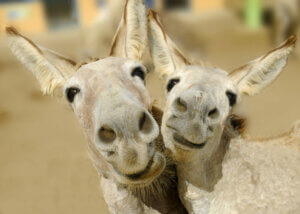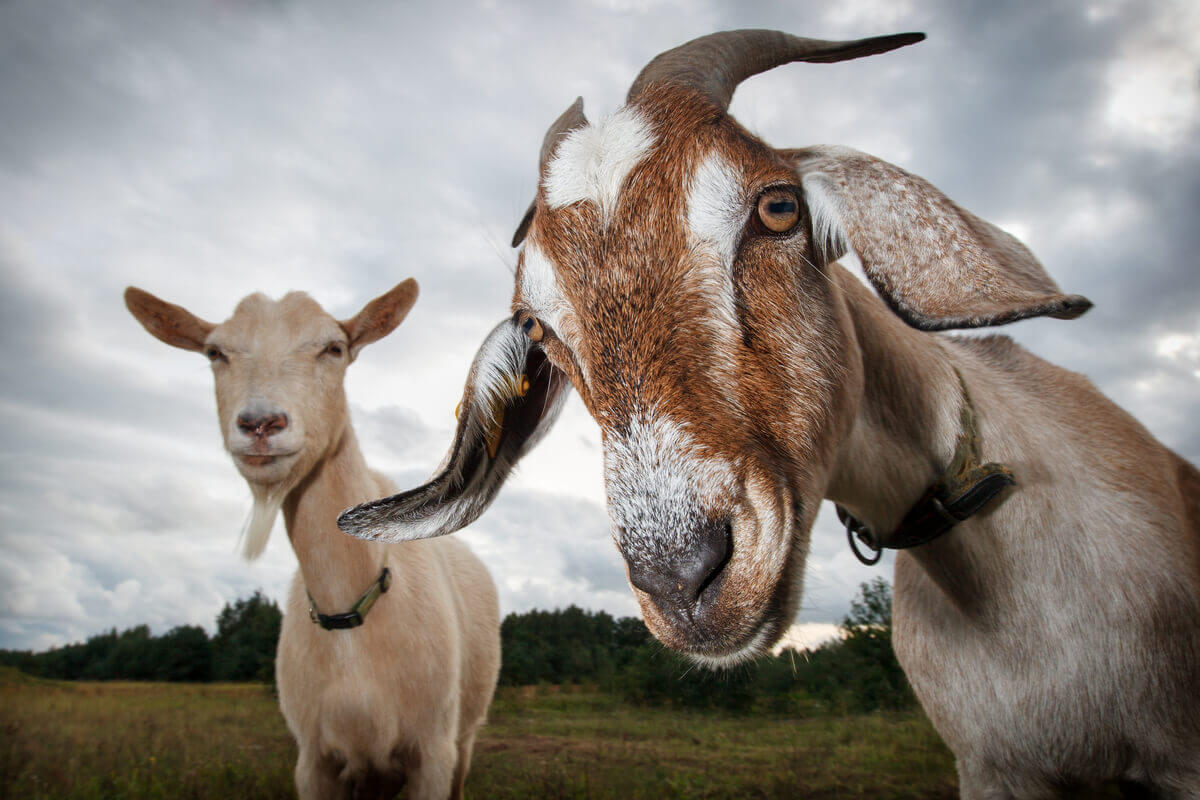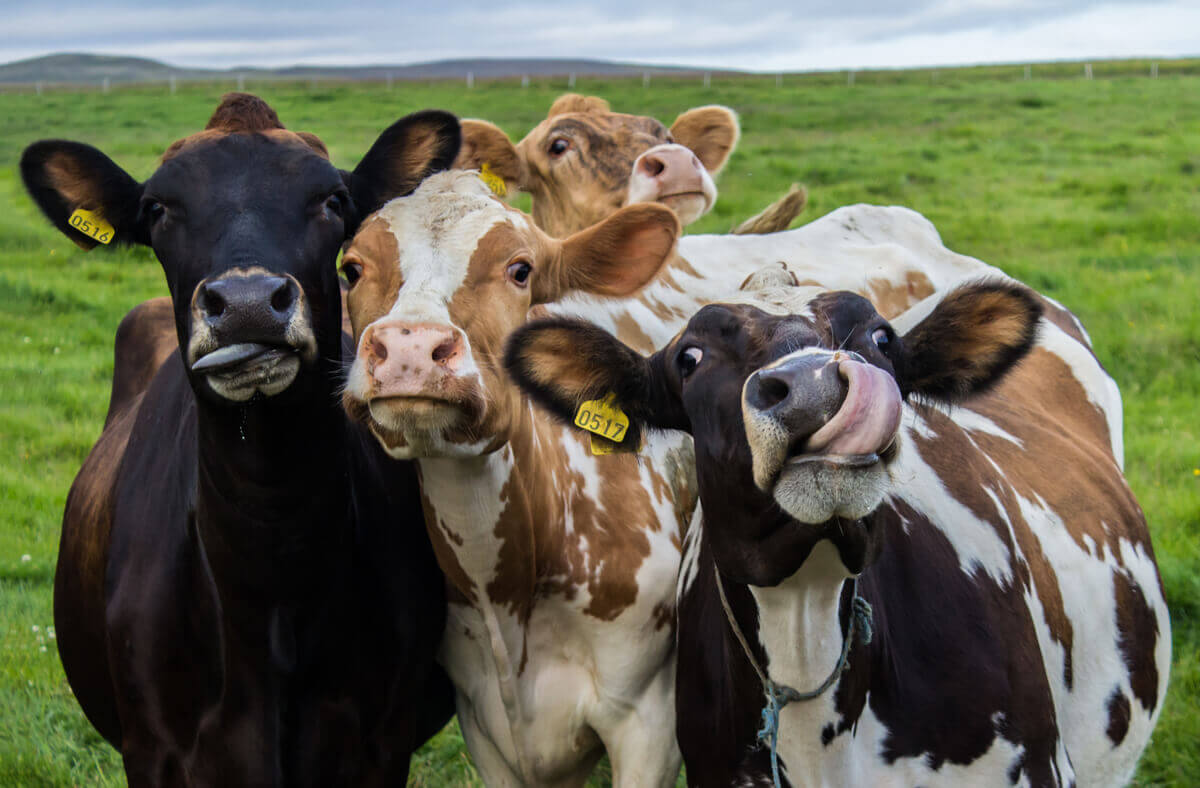The Application of Ethology on Farm Animals


Written and verified by the vet Érica Terrón González
Ethology is the science that studies animal behavior from a biological but also psychological point of view. That is, this branch analyzes the simplest behavior patterns, as well as the most complex, ranging from muscular reflexes when faced with a stimulus, to the tendency of some bird species to migrate even when they live in captivity. Therefore, the application of ethology on farms can be very useful in covering all the animals’ behavioral needs.
What are its possible uses? In the following article, we’ll look at some of the most important ones.
Importance of applied ethology in animal production
Since prehistoric times, it’s been evident that knowledge of animal behavior has been of great value to human survival. Over time, the application of ethology has become more sophisticated and is now considered one more factor in animal production. In fact, thanks to ethology, livestock farms can optimize production by improving animal welfare.
It’s possible to apply ethology to all areas of a farm, from the design of facilities to handling and transport. But, above all, it’s interesting to use it in aspects such as feeding and animal reproduction.

The application of ethology to feeding
A good farmer knows that it’s not only important to cover the nutritional requirements of the dairy cow. It’s also important to take into account the characteristics of the species when it comes to feeding.
For example, a sheep’s consumption of grass at midday can be half of what a cow would consume in the same enclosure.
Circadian rhythms and nutritional needs can also affect the feeding behavior of the species. Animals usually prefer tall grass over short grass, as it provides them with a greater amount of energy. If they receive their food in a trough rather than in the field, they prefer whole feed over chopped feed, again for energy reasons.
In the morning, ruminant animals consume more leguminous plants, while in the afternoon they prefer grasses.
The age of an animal can also influence its feeding behavior. For example, it’s been shown that calves consuming artificial milk eat better when fed in groups. This is because animals are more comfortable when watching and listening to their nursing partners.
Finally, social factors within the herd also play a role. Social status conditions whether an animal will be disturbed while eating or will have preference in access to food.
The application of ethology to reproduction
Multiple factors affect an animal’s reproductive behavior, including age, breed, diet, or stress, not to mention the presence of another more dominant male or female in the herd. Without a doubt, we see the most significant effects with sensory stimulation and changes in environmental conditions.
The importance of the five senses
Reproductive activity isn’t a constant in an animal’s life, but requires maturation and stimulation. Most behavior during this period depends on the hormonal state and sensory perception of the living being. What’s more, various factors affect its development, starting with the neuroendocrine mechanisms.
Reproductive responses have a great deal to do with smell. The olfactory system captures the pheromones that the opposite sex produces and activates the reproductive instinct of the animal.
Therefore, any human intervention that alters pheromone production – for example, the application of antibiotics that affect the vaginal flora of females – will have a negative effect on reproduction.
Studies have even shown that the exposure of females to artificial auditory and olfactory stimuli doesn’t produce the same response as being in the presence of a stallion.
Sight and daylight also influence reproductive behavior. Some animals show a preference for long daylight periods during the warm season, as is the case with the horse. Other species have greater reproductive activity when days are short, as is the case with sheep and goats.
Finally, auditory stimulation is also essential. It’s important in some species such as pigs, in which positive reproductive response to certain sounds has been seen. On the other hand, we know that auditory stimulation plays a very important role in maintaining the mother-child bond.
Reproduction and environmental conditions
Temperature affects reproductive behavior. Observations have shown that, in cows and sheep, the arrival of an unexpected cold period decreases the incidence of animals going into heat. Another example is the case of males, whose libido is lowered by summer heat, due to the difficulty in dissipating body heat.
At the same time, it’s important to consider that the periodicity of mating depends on environmental conditions. For example, farmers have observed curious results in English sheep sent to South Africa. Not all of them are able to change their reproductive rhythm to that of the southern hemisphere, or at least not immediately.

Ethology is the science that studies animal behavior from a biological but also psychological point of view. That is, this branch analyzes the simplest behavior patterns, as well as the most complex, ranging from muscular reflexes when faced with a stimulus, to the tendency of some bird species to migrate even when they live in captivity. Therefore, the application of ethology on farms can be very useful in covering all the animals’ behavioral needs.
What are its possible uses? In the following article, we’ll look at some of the most important ones.
Importance of applied ethology in animal production
Since prehistoric times, it’s been evident that knowledge of animal behavior has been of great value to human survival. Over time, the application of ethology has become more sophisticated and is now considered one more factor in animal production. In fact, thanks to ethology, livestock farms can optimize production by improving animal welfare.
It’s possible to apply ethology to all areas of a farm, from the design of facilities to handling and transport. But, above all, it’s interesting to use it in aspects such as feeding and animal reproduction.

The application of ethology to feeding
A good farmer knows that it’s not only important to cover the nutritional requirements of the dairy cow. It’s also important to take into account the characteristics of the species when it comes to feeding.
For example, a sheep’s consumption of grass at midday can be half of what a cow would consume in the same enclosure.
Circadian rhythms and nutritional needs can also affect the feeding behavior of the species. Animals usually prefer tall grass over short grass, as it provides them with a greater amount of energy. If they receive their food in a trough rather than in the field, they prefer whole feed over chopped feed, again for energy reasons.
In the morning, ruminant animals consume more leguminous plants, while in the afternoon they prefer grasses.
The age of an animal can also influence its feeding behavior. For example, it’s been shown that calves consuming artificial milk eat better when fed in groups. This is because animals are more comfortable when watching and listening to their nursing partners.
Finally, social factors within the herd also play a role. Social status conditions whether an animal will be disturbed while eating or will have preference in access to food.
The application of ethology to reproduction
Multiple factors affect an animal’s reproductive behavior, including age, breed, diet, or stress, not to mention the presence of another more dominant male or female in the herd. Without a doubt, we see the most significant effects with sensory stimulation and changes in environmental conditions.
The importance of the five senses
Reproductive activity isn’t a constant in an animal’s life, but requires maturation and stimulation. Most behavior during this period depends on the hormonal state and sensory perception of the living being. What’s more, various factors affect its development, starting with the neuroendocrine mechanisms.
Reproductive responses have a great deal to do with smell. The olfactory system captures the pheromones that the opposite sex produces and activates the reproductive instinct of the animal.
Therefore, any human intervention that alters pheromone production – for example, the application of antibiotics that affect the vaginal flora of females – will have a negative effect on reproduction.
Studies have even shown that the exposure of females to artificial auditory and olfactory stimuli doesn’t produce the same response as being in the presence of a stallion.
Sight and daylight also influence reproductive behavior. Some animals show a preference for long daylight periods during the warm season, as is the case with the horse. Other species have greater reproductive activity when days are short, as is the case with sheep and goats.
Finally, auditory stimulation is also essential. It’s important in some species such as pigs, in which positive reproductive response to certain sounds has been seen. On the other hand, we know that auditory stimulation plays a very important role in maintaining the mother-child bond.
Reproduction and environmental conditions
Temperature affects reproductive behavior. Observations have shown that, in cows and sheep, the arrival of an unexpected cold period decreases the incidence of animals going into heat. Another example is the case of males, whose libido is lowered by summer heat, due to the difficulty in dissipating body heat.
At the same time, it’s important to consider that the periodicity of mating depends on environmental conditions. For example, farmers have observed curious results in English sheep sent to South Africa. Not all of them are able to change their reproductive rhythm to that of the southern hemisphere, or at least not immediately.

All cited sources were thoroughly reviewed by our team to ensure their quality, reliability, currency, and validity. The bibliography of this article was considered reliable and of academic or scientific accuracy.
- Etología [Internet]. Es.wikipedia.org. [cited 18 September 2020]. Available from: https://es.wikipedia.org/wiki/Etolog%C3%ADa
- Ritmo circadiano [Internet]. Es.wikipedia.org. [cited 18 September 2020]. Available from: https://es.wikipedia.org/wiki/Ritmo_circadiano
- Neuroendocrinología [Internet]. Es.wikipedia.org. [cited 18 September 2020]. Available from: https://es.wikipedia.org/wiki/Neuroendocrinolog%C3%ADa#:~:text=La%20neuroendocrinolog%C3%ADa%20es%20la%20rama,hormonal%20en%20el%20cuerpo%E2%80%8B.
- Ortega Cerrilla M, Gómez Danés A. Aplicación del conocimiento de la conducta animal en la producción pecuaria [Internet]. Interciencia; 2006 [cited 18 September 2020]. Available from: http://produccion-animal.com.ar/etologia_y_bienestar/etologia_en_general/01-aplicacion.pdf
This text is provided for informational purposes only and does not replace consultation with a professional. If in doubt, consult your specialist.








